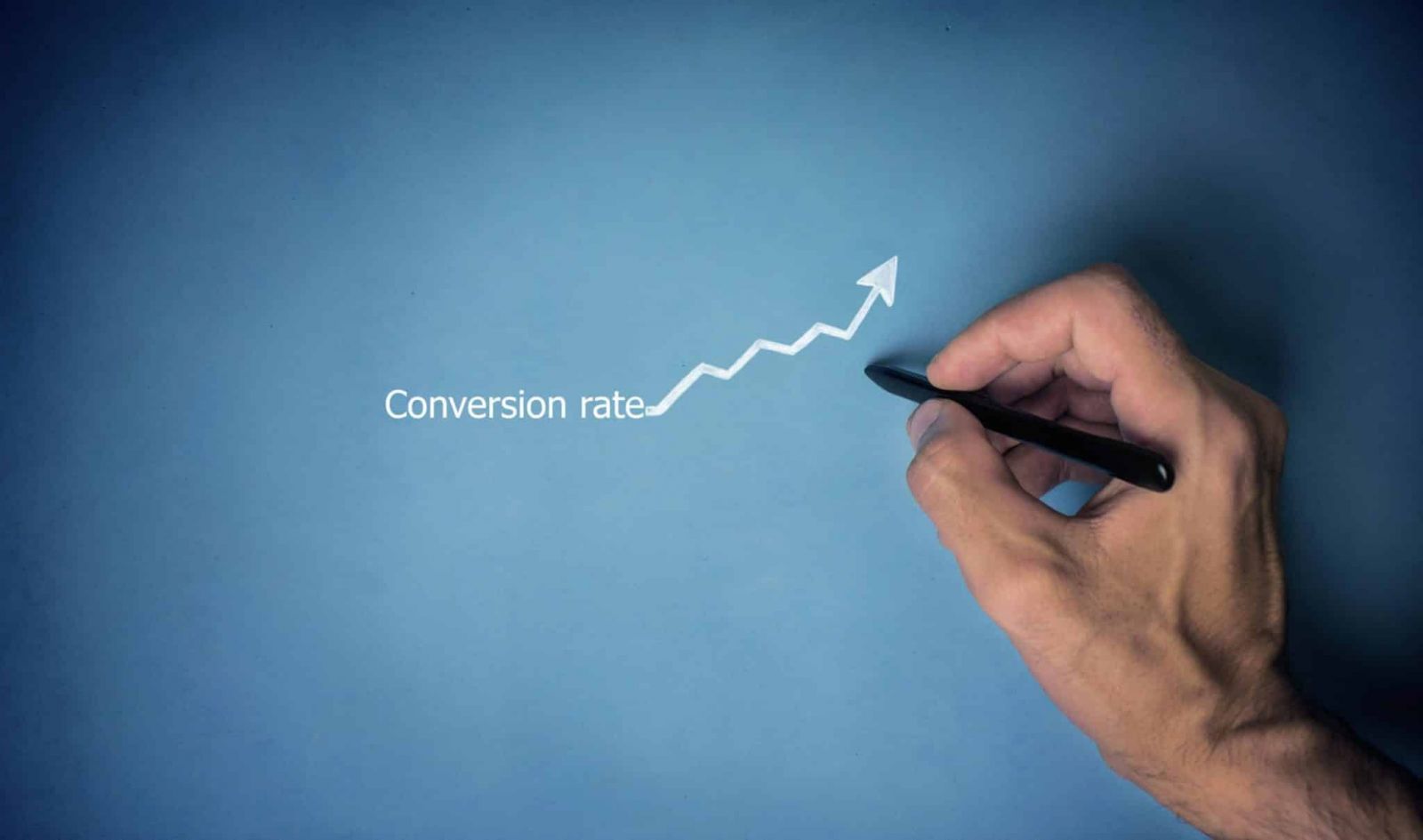What is Lead Conversion?
Lead conversion is what makes you happy. We’re not saying that if you don’t convert, you don’t eat, but you’ve got to sell your widgets.
In a more proper sense, lead conversion is that glorious point where your website visitor converts into a buyer and spends their cash on your product. And if it was always that easy, we could go on a nice vacation. But it never is. Digital marketing is as fickle as the weather and elusive as the whispering wind.
A movie quote we love from The Electric Horseman has Robert Redford asking why the head office would put a horse on a concert stage with a bunch of electric lights and himself – a champion rodeo rider – on a toy horse. Company CEO John Saxon replied, “You can’t apply logic to marketing; it will just confound you.”
Some things work well for getting people to your site but aren’t a great sales tool. A hysterical meme of a cat playing with a mouse might bring clicks to your pest control site, but they might not be buyers.
Understanding your bounce rate should explain that. If visitors view only the page they landed on before bouncing out, they weren’t a qualified lead, just traffic.
More web traffic means more leads and more chances to convert them – but again, you’ve got to drive qualified traffic. Understanding whether your lead is an MQL, marketing qualified lead, or a SQL, sales qualified lead is also essential.
The Art of AI in Lead Conversions
Suppose you are sure from their page-selection behavior that a lead is interested in all your products or a specific service. A chat box and some AI (Artificial Intelligence) software can turn would-be lookers into recruits and possible sales into dollar signs.
The same can be said for returning or funneled buyers that need a tiny push, such as a last-minute 10% off sale – automatically initiated by your AI system.

Lead Conversion Strategies
Effective lead conversion strategies will boost your lead conversion and help pinpoint where content marketing is working and where it isn’t. And that’s why you should use various systems to drive traffic to avoid being a one-trick pony.
Website Strategies
To begin with, you’ll need an attractive and appealing landing page. You only get one chance to make a first impression. Impress immediately or risk losing visitors forever.
Ideally, your landing page is interactive and fun. You might have articles about products and their use and a sales channel. High-quality search engine optimized evergreen stories bring traffic organically and help retain visitors. Some will be buyers.
An easy-to-navigate, professional website entices visitors to explore, buy, and return. An option to opt-in for a free email newsletter or sales information is a plus. Chat boxes and artificial intelligence strategies can round out your website strategy.
Email Strategies
Email is still critical, but today’s rules have changed. You can’t spam every email address on the web, but you can purchase or be part of an email-send that targets your product or service to readers who have opted-in to receive emails.
Your well-researched and targeted involvement can succeed when those email lists and blasts come from reputable sellers.
The “open” rate for address owners who open their email should be high – 20 to 50% – and the corresponding click-through rate should be 20 to 30%. That’s for a targeted marketing campaign from a reputable email list provider.
Cold call emails are lucky to get an open rate of 1%, but emails you send to active customers will carry an open rate of up to 50%. And, once they offer their email for sales info and other reasons, you’ll be free to engage them regularly.
Reasons to send emails to customers:
- The Welcome Email – Thank them for opting in and offer a limited-time special or discount
- The Newsletter – A chance to highlight your business and entertain readers creatively
- Retention Email – A reminder that you value your customer and offer great products
- Promotional Email – Thank you for opting in or being a buyer – special pricing!
- Survey Email – A chance to get free feedback to understand your customers better
- Upsell Email – Your chance to offer personal recommendations and cross-sell
- The Cart Abandonment Email – A critical email targeted at buyers who vanished. Did they forget? Did they need a little push? Better find out!
Obtaining new buyers is 6 to 10 times more expensive than retaining current customers. Existing customers are golden. They’ll continue to make purchases when you treat them right.
Build Content Marketing
Content marketing is a sexy way of organically building traffic to your site. It seems informative to the reader without being intrusive and gets results. And, once posted, popular items can be seen and responded to for years.
Types of Content Marketing:
- Comment Response – An innocuous response to a posting that stimulates interest in your product
- Blogs – Located on your site or others, blogs highlight current events and fun topics that can promote styles and brands in an enjoyable, non-pushy manner. Research suggests that having a blog helps you attract nearly 70% more leads than businesses that don’t offer one.
- Videos – Trending videos can go viral while secretly supporting your website or products
- Social Media – Sites like Facebook and TikTok offer a presence for your customers to engage with you directly, and when they add you to their likes and shares, you get free publicity
Implementing a well-structured content marketing strategy can increase your leads by more than 30%.
Use Social Media Channels to Generate Leads
Millions of web surfers go straight to Facebook, Twitter, TikTok, and Instagram before pouring their morning coffee. Don’t be left out!
Posting daily to your social media accounts with news, specials, and fun facts gets interaction and regular visitors. And your posts will drive brand awareness and funnel clicks to your landing page or new blogs and articles.
How to Measure Lead Conversion Results
Email campaigns, content marketing, and social media are great lead generators, but you must qualify and quantify your results. Your website analytics will tell you exactly how many links to your web pages exist and whether they are pulling viewers or not.
Advertising on social media makes sense, but you’ve got to know the exact results of every ad and article with a direct link.
View your social media results on your advertising pages. Web traffic is available on your website under the “administrator” tab, so check your results regularly.

Get to know how many readers join you from your blogs, internal and external articles, and social media accounts. Then consider additional advertising dollars for what’s working.
Lead Conversion Metrics
Unfortunately, getting traffic is only half the equation of lead conversion numbers. You’ve got to know the metrics for each link’s success and sales. Generating 500 new clicks from paid advertising is great, but did you make a profit? What’s your cost per lead and your cost per sale?
Here’s a simple example:
- Spend – $100 on advertising
- Clicks – 500 visitors to your landing page
- Cost – 20-cents per lead
- Conversion Rate – 20% or 100 sales
- Cost per sale – $1
If your product sells for $10 and costs you $3 landed, your cost for marketing is now $4. You did great if your infrastructure expenses were low.
Comparing ad results will help you determine (quickly) which social media platforms and AdWord programs are worth continuing and at what size structure.
It’s always good to try at least two or three different styles of advertisements to extrapolate costs and effectiveness.












Replies to This Discussion